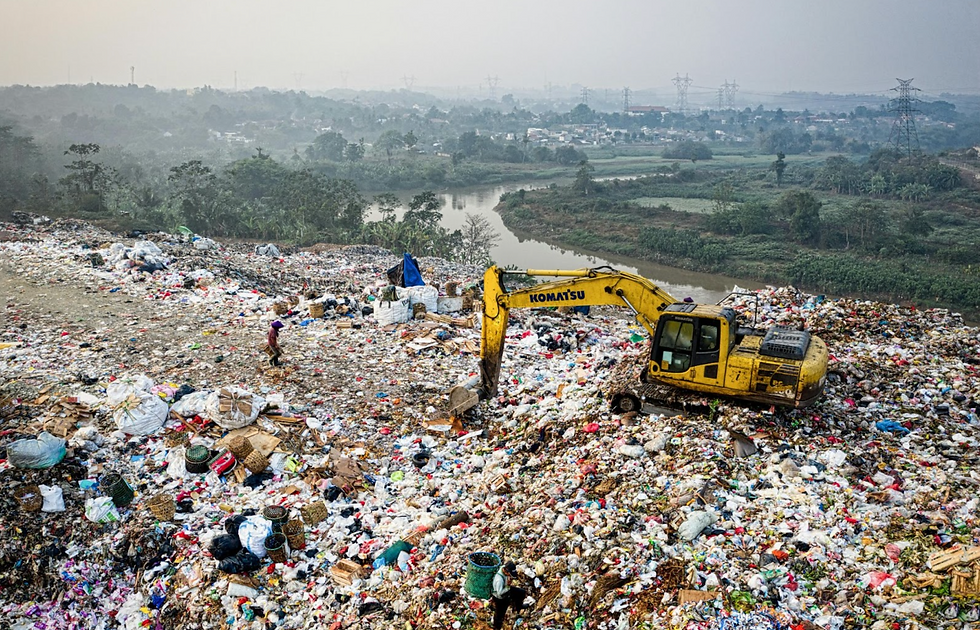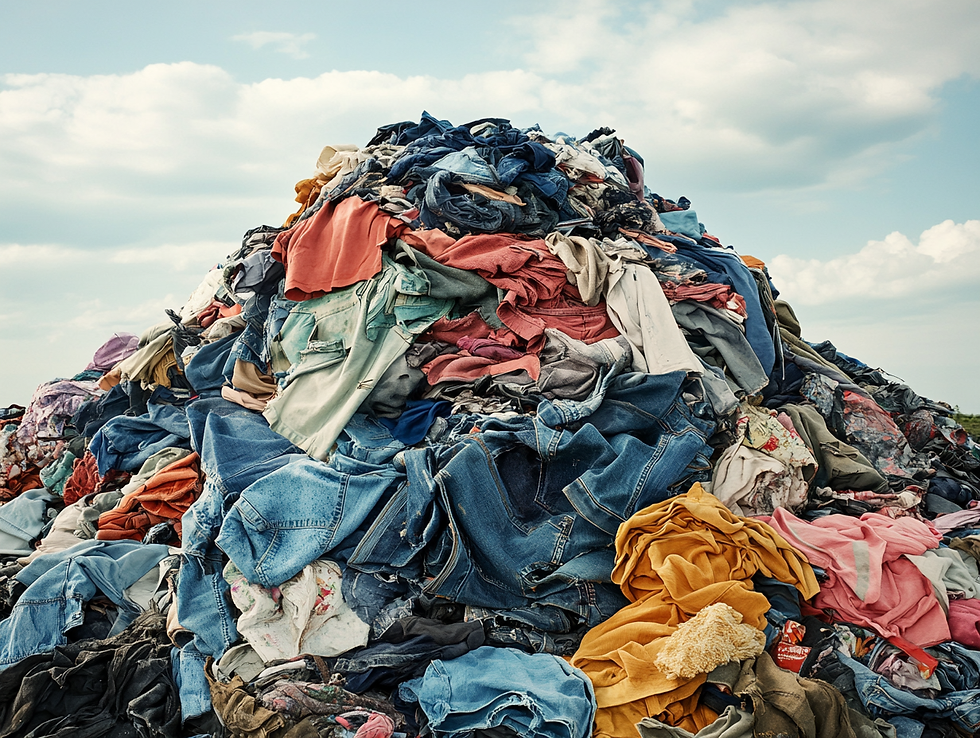Environmental Impact of Fast Fashion: It's no surprise that the traditional fast fashion industry is a major contributor to climate change, but the reality is even more alarming: for every five garments produced, three end up in landfills or incinerated each year.

But who is to blame?
Fast fashion is a major threat to the environment, driven by a culture of overconsumption and disposable clothing. The industry churns out massive amounts of cheaply made garments, encouraging people to buy more and discard them quickly. This constant cycle leads to overflowing landfills, excessive energy and water use, and harmful chemicals polluting our ecosystems. On top of that, fast fashion relies on unsustainable materials and unethical production practices that exploit both the planet and workers. It's a vicious cycle that prioritises profits over the long-term health of our environment, and it's one we need to break.
Brands are largely responsible for the environmental damage caused by fast fashion. They overproduce low-quality, cheaply made garments to keep up with a demand they’ve created, pushing constant new collections and trends at unsustainable rates. This results in mountains of waste and pollution as unsold or quickly discarded clothes pile up. At the same time, consumers are heavily targeted by fast fashion marketing, lured into buying the latest styles with promises of affordability and trendiness. The pressure to keep up with the next trend drives overconsumption, while the high cost of sustainable fashion often prices people out, leaving them few options but to choose cheaper, more environmentally harmful clothing. It’s a cycle that needs to change from both sides.

How can FLYP help?
At FLYP, we believe it is time for change. That’s why we’re on a mission to accelerate the fashion industry’s transition towards a truly sustainable model and are excited to be laying a blueprint for others to follow!
FLYP is challenging the status quo through our four pillars of sustainable disruption:
Made to Order
At FLYP, we want to disrupt the negative cycle of excess clothing production leading to waste. That is why we are striving for a ‘zero waste’ approach to creating high quality clothing. We use advanced techniques to ensure manufacturing only begins when you press purchase. Because of this, we increase your ability to develop unique designs and significantly reduce the likelihood of clothing ending up in landfill or incineration.
Direct Shipping
We ship directly to our customers from our manufacturing sites. This helps reduce carbon dioxide emissions by lowering the distance each order travels and reduces shipping time!
Sustainable Materials
FLYP is committed to prioritising sustainable materials. That is why we already offer a range of products made with recycled and certified sustainable materials.
Digital Product Development Using 3D Design
At FLYP, we have removed the need to ship samples back and forth through our 3D modelling design process. This allows you to create with greater efficiency and less environmental impact.
Altogether, with most brands seemingly turning a blind eye to the environmental crisis, much of the responsibility falls on consumers to change the status quo when it comes to fashion, and FLYP hopes to provide a platform to enable that.
References:
McKinsey Sustainability
Remake Fashion Accountability Report 2024
Comentarios